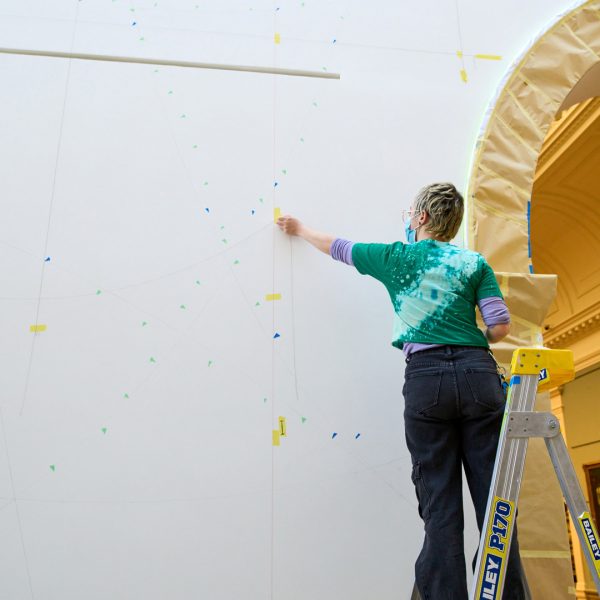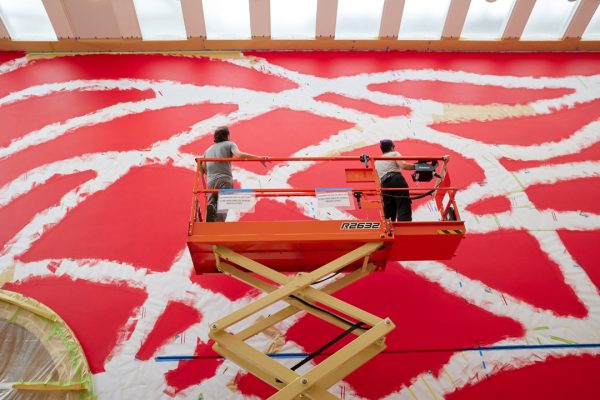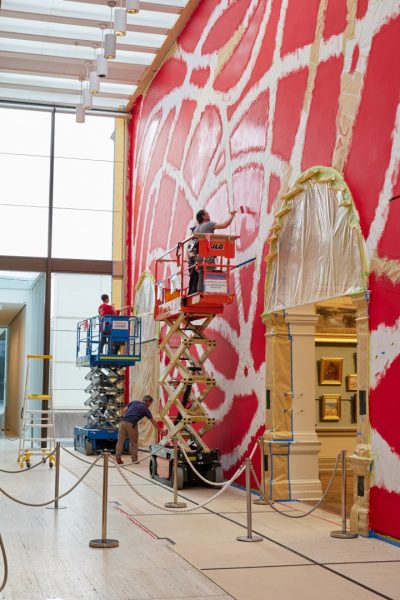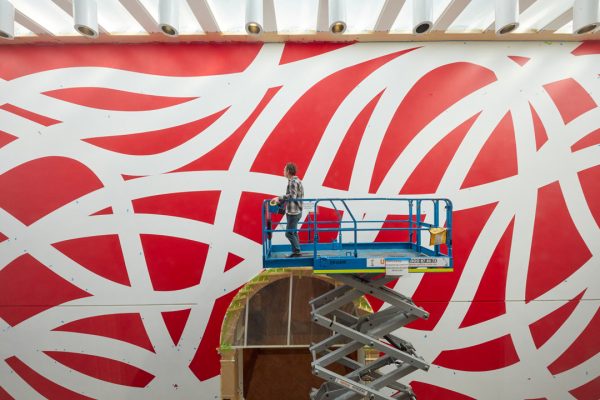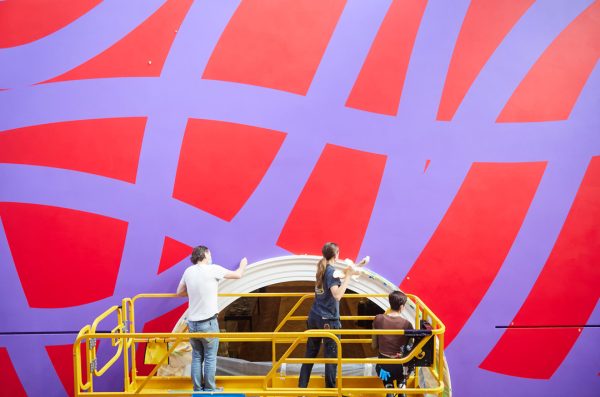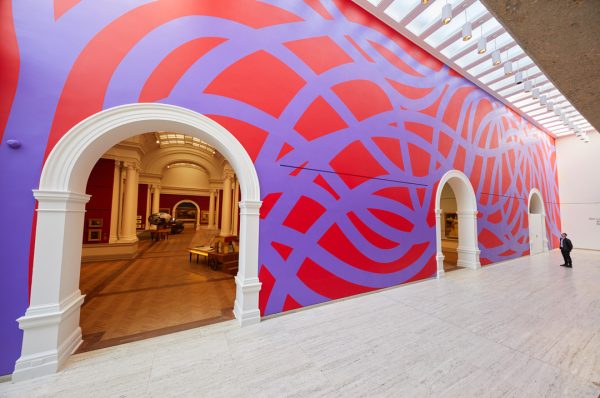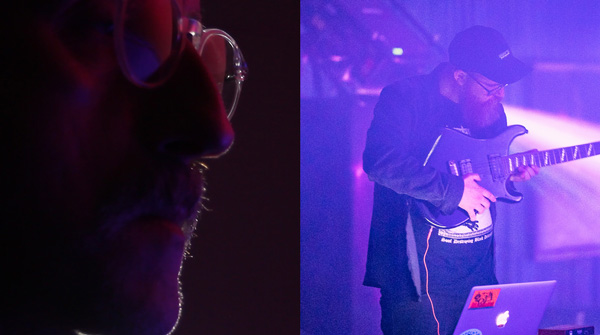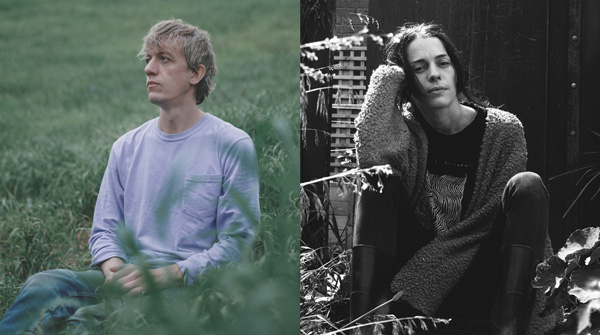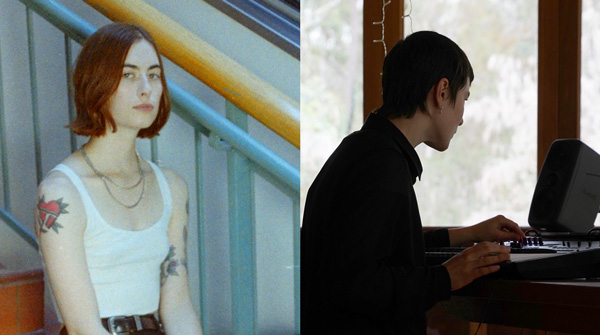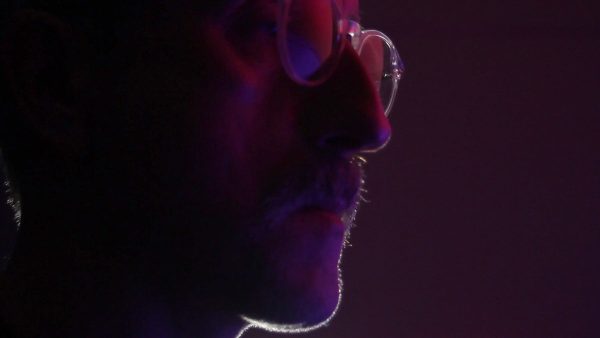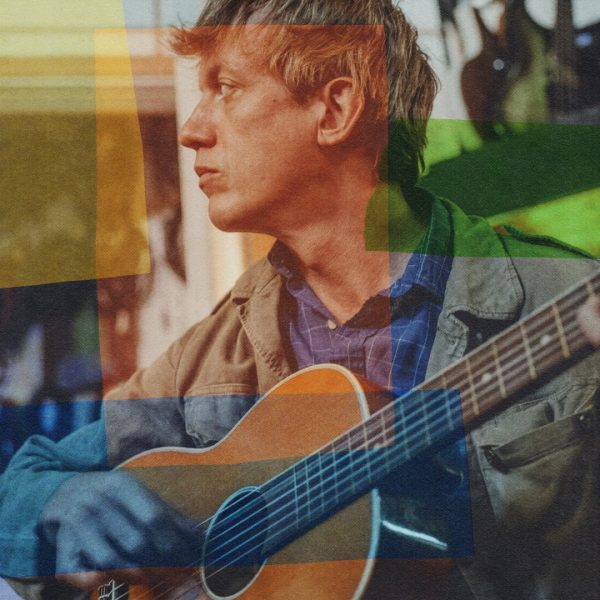PROJECT 37
SOL
LEWITT
Project Summary
Kaldor Public Art Projects, in collaboration with the Art Gallery of New South Wales, presented the 37th Kaldor project, Sol LeWitt: Affinities and Resonances, featuring works by American artist Sol LeWitt in conversation with paintings by Anmatyerr artists Emily Kame Kngwarreye and Gloria Tamerre Petyarre. The exhibition introduced three exciting new musical commissions, each developed collaboratively by an American musician and an Aboriginal Australian musician—JWPATON with Chuck Johnson, amby downs with Steve Gunn, and E Fishpool with Claire Rousay.
LeWitt was a pivotal figure of late 20th Century American art whose ideas continue to influence artists around the world. Many of his artworks were conceived as sets of instructions that could be executed by others directly. He often likened his process to that of a composer whose music acquired subtle differences with each new performance.
For Sol LeWitt: Affinities and Resonances his Wall drawing #955: Loopy Doopy (red and purple) enveloped the southern wall of the John Kaldor Family Hall in tangled bands of vibrant colour. Belonging to a series LeWitt commenced in 1998, the work bears a striking resemblance to paintings by Kngwarreye that LeWitt first encountered in 1997. He described feeling a “great affinity“ for her work and went on to become an avid collector of paintings by Kngwarreye and other Central Desert artists. Sol LeWitt: Affinities and Resonances explored the connections between these seemingly disparate art making traditions while examining the processes of creation and collaboration through dynamic new music composed in response to Wall drawing #955: Loopy Doopy (red and purple).
ABOVE: Installation view of Sol LeWitt Wall drawing #955, Loopy Doopy (red and purple) 2000 in the John Kaldor Family Hall at the Art Gallery of New South Wales, first drawn by Paolo Arao, Nicole Awai, Hidemi Nomura, Jean Shin, Frankie Woodruff at the Whitney Museum of American Art, New York, November 2000; current installation drawn by Kit Bylett, Andrew Colbert, Troy Donaghy, Szymon Dorabialski, Gabriel Hurier, Rachel Levine, Owen Lewis, Nadia Odlum, Tim Silver, Alexis Wildman at the Art Gallery of New South Wales, August 2022 © Estate of Sol LeWitt, photo © Art Gallery of New South Wales
Sol LeWitt
born 1928 in Hartford, Connecticut, US
died 2007 in New York, US
Emily Kame Kngwarreye
Anmattyer, Central Desert region
born c. 1910 in Alhalkere, Utopia, Australia
died 1996 in Alice Springs, Australia
Gloria Tamerre Petyarre
Anmattyer, Central Desert region
born 1938 in Mosquito Bore, Utopia, Australia
died 2021 in Alice Springs, Australia
Sol LeWitt: Affinities and Resonances
27 August 2022 – 12 February 2023
John Kaldor Family Hall
Art Gallery of New South Wales, Sydney
Collaborating musicians
JWPATON, Chuck Johnson, amby downs, Steve Gunn, E Fishpool, Claire Rousay
RESONANCES: COMMISSIONED MUSIC PROGRAM
The 37th Kaldor project featured three newly commissioned musical works, created in response to LeWitt's monumental Wall drawing #955: loopy doopy (red and purple). Each piece of music was developed collaboratively by an American musician and an Aboriginal Australian musician—JWPATON with Chuck Johnson, amby downs with Steve Gunn, and a Budawang musician with Claire Rousay. Responding to the wall drawing as an alternative form of musical notation, the commissioned works formed three distinct interpretations of LeWitt's work, creating a synergised visual and musical experience.
Music is available to stream through Longform Editions.
CHUCK JOHNSON AND JW PATON
Chuck Johnson and JWPATON created Tangled mirror yarn through the digital ether and across the great ocean from their respective homes in Oakland, California, and on Darug Country in Western Sydney. The resulting work is a swirling, anamorphic shift of euphoric distortions and clustered orchestral swells and peaks.
Tangled mirror yarn was performed live at the Gallery on 31 August, and is available to stream through Longform Editions.
STEVE GUNN AND AMBY DOWNS
Murri musician amby downs and American musician Steve Gunn spent time creating across the globe. From Melbourne to Gadigal land in Sydney, to the East Coast of the USA and then across Europe, Looming change / Building fabric is a journey that moves like the travel that both composers undertook in the first half of 2022. It drifts and twists with a singular beauty that mirrors the internal logic of LeWitt’s wall drawing.
Looming change / Building fabric premiered live at the Art Gallery of New South Wales on 19 October, and is available to stream through Longform Editions.
CLAIRE ROUSAY AND A BUDAWANG MUSICIAN
In Distance therapy American musician Claire Rousay and a Budawang musician explore the softness of the 2D artworks and their sense of movement, with subtly glitched rhythms and wavy synth textures.
They performed Distance therapy live at the Art Gallery of New South Wales on Wednesday 7 December.
COLLABORATING MUSICIANS
SOL LEWITT
Coining the term “conceptual art“, Sol LeWitt is considered one of the most influential artists of his time. From 1968 to 2007, LeWitt created 1,200 wall drawings, reducing his art-making process to a bare vocabulary of lines, curves, geometric shapes and primary colours. These works were distinctive for their method which began with a set of instructions or a simple diagram, executed by people other than the artist at different times and places. LeWitt once wrote that “ideas can be works of art“, giving greater importance to the idea behind his work rather than its execution.
The Art Gallery of New South Wales now holds one of the world's foremost collections of works by Sol LeWitt, thanks to the gift of the John Kaldor Family Collection in 2008.
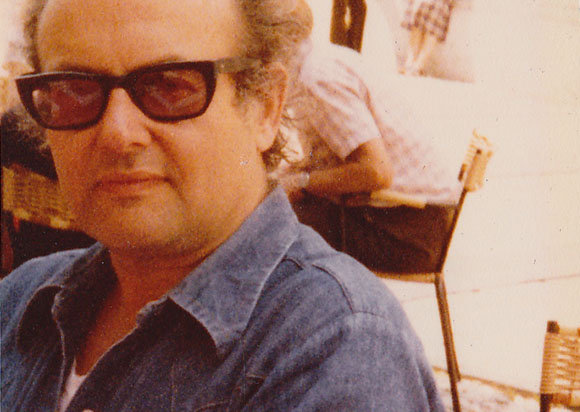
Emily Kame Kngwarreye
Working in a remote, north-west corner of the Simpson Desert, on land annexed by pastoral leases during the 1920s, Emily Kame Kngwarreye became, in the final decade of her life, perhaps the most celebrated and sought-after Australian artist of her time.
A leading figure in eastern Anmatyerr ceremony, Kngwarreye was also the artist in whose work many non-Aboriginal Australians first felt the force of an Indigenous art that could be seen to negotiate a space both within the aesthetics of Western abstraction and the timeless precepts of Aboriginal cultural traditions. Alhalker, the desert country of Kngwarreye's birth, remained the means and end of Kngwarreye's art.
Kngwarreye attained artistic maturity as a woman in her seventies, not long converted to the techniques of painting on canvas, but with decades of painting in a ceremonial context and activity with the Utopia Women's Batik Group behind her—as well as life as a camel handler and stockhand. In an extraordinarily prolific eight years of professional painting, she produced magnificent canvases in which she appears to have aimed for essentialist visions of the multiplicities and connectedness of her country, as imaged in terms of its organic energies.
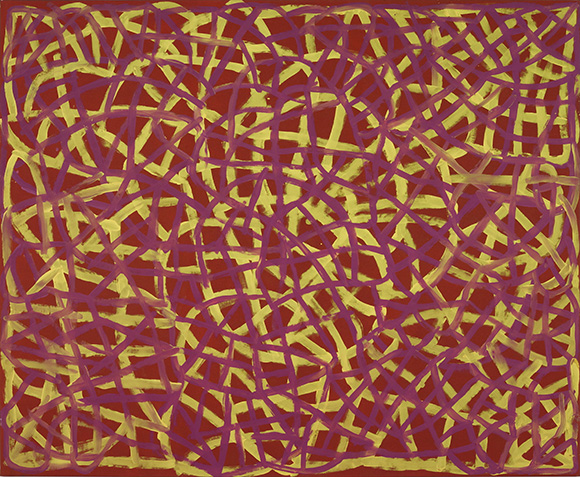
Emily Kame Kngwarreye Untitled 1995, synthetic polymer paint on polycotton, 245 x 201 cm, Private collection, Sydney © Estate of Emily Kame Kngwarreye
Gloria Tamerre Petyarre
Following her first solo exhibition in 1991, Gloria Tamerre Petyarre was an experimental artist renowned for her diversity and mastery as a colourist and regarded as one of the leading artists in the Utopia community. She exhibited widely in Australia, Europe, North America and Asia. Like Emily Kame Kngwarreye, Petyarre first came to prominence as a batik painter in the late 1970s, before taking up painting on canvas in the late 1980s. As various commentators have noted, this use of sophisticated batik-making techniques, combined with the early referencing of body marking associated with women's ceremonies, shaped the unique forms of Utopia painting in the 1980s. Petyarre, one of four renowned painter sisters, is considered to have taken various forms based on ceremonial markings and her Altyerr or Aknganenty stories to abstraction more consistently than many of her contemporaries.
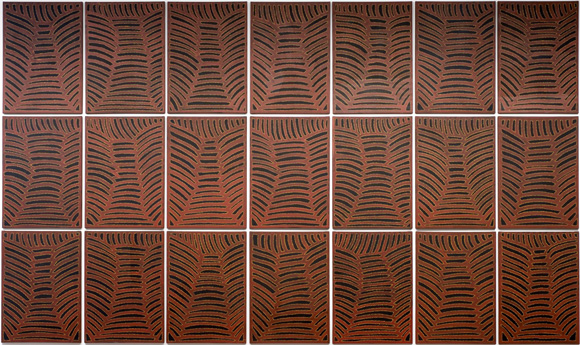
Gloria Tamerre Petyarre Awelye for the mountain devil lizard (Twenty-one women) 1996, 21 panels: synthetic polymer paint on canvas, 98 x 70 cm each panel; 294 x 490 cm overall, Art Gallery of New South Wales, gift of Yuana and Stephen Hesketh 1997 © Gloria Tamerre Petyarre
SUPPORTERS
Kaldor Public Art Projects would like to thank the Sol LeWitt Foundation for the invaluable advice and support they have given this project.
Kaldor Public Art Projects is grateful to Bloomberg Philanthropies for its support of Project 37, our eleventh project together. Bloomberg Philanthropies is committed to supporting cultural institutions and empowering artists across the physical and digital worlds.
Kaldor Public Art Projects is thankful for the longstanding support and encouragement of our founding donor The Balnaves Foundation with whose support we have realised 21 projects.
Our Government Partner, Create NSW, continues to provide invaluable support and assistance.

